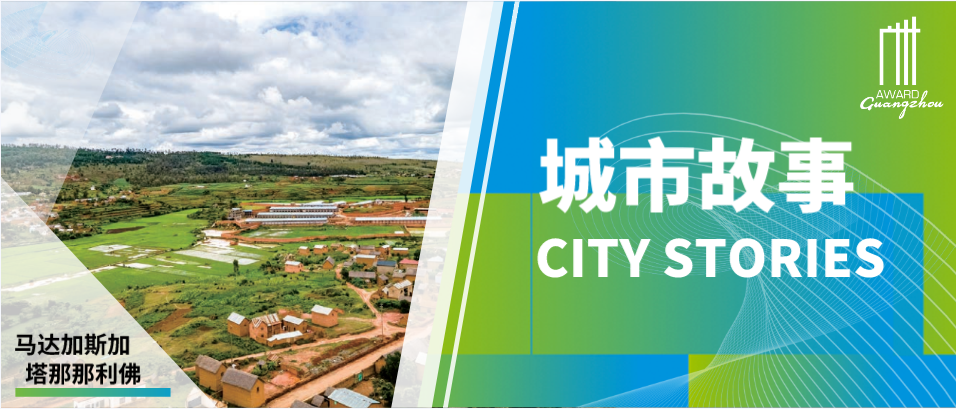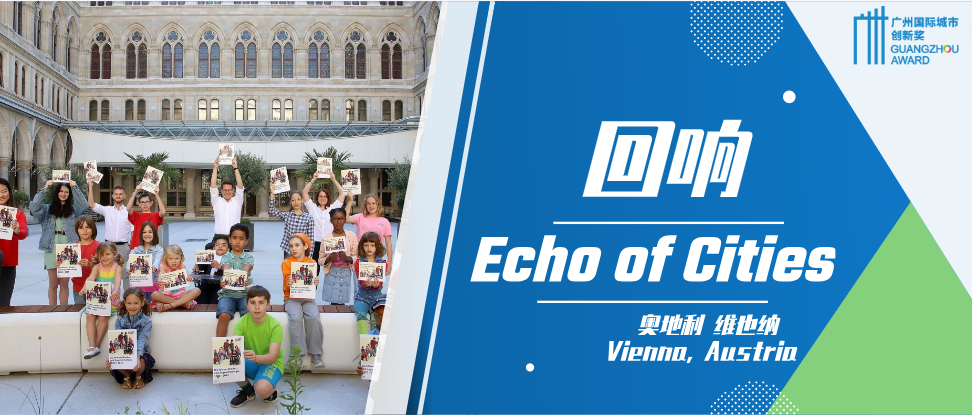Case Study: Climate Resilient Neighbourhood (Copenhagen, Denmark)
By LI Xiaohui / Guangzhou Urban Planning and Design Survey Research Institute
Copenhagen was a winner of the 3rd Guangzhou International Award for Urban Innovation. This study took place during May 28th and 31st, 2017.
St. Kjelds Neighborhood is the first climate resilient neighborhood in Copenhagen and also the first to implement a cloudburst management project in line with the city’s comprehensive urban renewal plan. The neighborhood covers an area of 100 hectares and is home to 24,000 dwellers. This renewal program has been granted DKK 60 million by the municipality as well as the Danish Housing Department. To date, the transformation of TasingePlads has been completed and the outcomes are positive. Also, a number of rainstorm management projects are under way, including transformation of St. KjeldsPlads and Bryggervangen as well as construction of Future Green Courtyards.
Background
Renowned as a green city and trailblazer, Copenhagen is active and innovative in pushing forward sustainable development. The downpour in 2011 prompted Copenhagen to be more responsive to climate change, in particular heavy rainfall. Based on the Copenhagen Climate Adaption Plan, Copenhagen further developed the Cloudburst Management Plan. This is a comprehensive plan combining both underground and surface solutions to manage rains and storms, with the purpose to mitigate the damage done by heavy rains to the city, improve urban space and community image, and create better living conditions for citizens. DKK 9.8 billion will be invested in this initiative and 300 urban development and renewal projects will be implemented in the next 20 years.
Process
1. The municipal government leads the transformation from strategic framework into special actions.
Extreme rainfall (more than 1000 mm of precipitation, average annual of Copenhagen being around 700 mm) in Copenhagen in 2011 brought about severe damages as well as strong awareness among the statesmen, professionals, and citizens of the necessity and imminence to tackle climate change.
This led to the approval of the “Climate Adaptation Plan” on August 25, 2011. The plan illustrated the challenges and opportunities that future climate changes may create. To prevent negative impacts and damages, the plan put forward the strategy and action principles to combat climate change, including monitoring, avoiding wrong investment, driving green growth, ensuring coordination with other plans and actions, responding to predictions of climate change, and analyzing and debating climate actions.
The “Cloudburst Management Plan”, passed at the city council on December 13, 2012, set a policy framework for the management of deluge. The plan established a set of standards for flood prevention and called for a cost analysis of doing so. It also gave priority to four types of areas: 1) high risk areas, 2) areas where measures are easy to implement, 3) areas with ongoing urban development projects, and 4) areas where synergistic effects can be gained.
The plan was further elaborated during 2013 and 2014. According to the plan, the city would be divided into seven catchment zones. For each zone, tailored cloudburst management principles and actions are to be taken. The plan also provides four surface solutions aside from the traditional underground solution (draining storm water out to lakes or seas), to manage heavy rains as well as improving urban public spaces: 1) stormwater roads, which transport water from the surface to the lake or the gulf; 2) detentions roads, wide roads that detain and store water; 3) green roads, somewhat narrower and able to detain and hold back the water; 4) detention areas, which can hold a large amount of water. These solutions are to be combined with the overall urban development with considerations of local contexts and have been translated into 300 projects. These projects carry an importance to where implementation takes place and are considered the core of new urban spaces.
2. The initiative is approved by the council, managed by the government, and operated by enterprises.
The Technical and Environmental Committee of Copenhagen approved of the initiative after a comprehensive analysis of the expected outcome, implementation cycle, risks and vulnerabilities, construction cost, and coordination with other development projects. In relation to implementation priority, discussions are scheduled during annual budgeting, following certain principles as follows: first-responding large facilities; projects that are easily implemented; efficient and effective detention roads and areas; areas that suffered the most damages in recent years, etc.
While it is approved by the Technical and Environmental Committee, the program is managed by the Technical and Environmental Administration and implemented by Greater Copenhagen Utility (HOFOR). HOFOR, a water and sewerage services provider, is the outcome of a public-private partnership and is able to raise finance with the government’s consent for project funding.
St. Kjelds Neighborhood was chosen as the first climate adaptive community to be built as well as a demonstration area for the implementation of the Cloudburst Management Plan. Renewal for this neighborhood had been approved of by the city council in 2010 because of dense population, decrepit facilities, and lack of green space.
3. Participatory and collaborative methods of planning and construction are adopted to achieve multiple goals.
TasingePlads, a former intersection, was the first demonstration project implemented. This project adopts the surface solutions put forward by the Cloudburst Management Plan. Permeable multi-purpose green spaces and underground reservoirs have been built to store rainwater. Through connection with the surrounding streets and buildings, the reservoirs can also trap rainwater on the roads and rooftops. When the reservoir is full, extra water will then enter the sewerage system. As for the rainwater stored, it can be used for irrigation through special devices. Spaces for recreational activities have also been created with landscaping and sporting facilities. These spaces, together with the shops in the streets, form an area for playing, recreation and drinking coffee. Transformed from a triangular hard-land intersection, the fully-built TasingePlads will become a street park that can detain water. This also means roughly 2,500 extra square meters of public green spaces for the neighborhood and a new site of ecological and social functions for the city. It is a successful combination of improving urban spaces and empowering neighborhoods.
The success of this demonstration project is closely related to the participatory and collaborative methods of planning and building. From the very beginning, community participation, place making, and government advocacy have been integrated into the objectives of the project. After the project started, a committee was set up, comprising representatives of the Technical and Environmental Administration (manager), HOFOR (project owner), Orbicon (designer), non-governmental organizations, and local residents, thus forming a multi-stakeholder partnership. For three years, the committee had been asking local residents for inputs through various activities and then responding with professional technical solutions. The committee also coordinated demands from different parties and, after discussion, finalized the plan and pushed it into motion. In this process, all stakeholders played an active role in the project. Intensive interaction and sufficient publicity led to understanding of the objectives, significance, and demands from different parties. The successful implementation also gives lessons to how to solve problems in relation to technicality, economics, and management.
The lessons from this demonstration project provide support for subsequent projects. Several renewal projects have been implemented or initiated, such as San AnnaePlads, St. KjeldsPlads, and Bryggervangen.
Outcome
Copenhagen Climate Resilient Neighborhood represents not only an implementation of Sustainable Development Goal 13 (take urgent actions to combat climate change and its impacts) and Goal 11 (make cities and human settlements inclusive, safe, resilient and sustainable) but also a type of coordination with the management and demands of the local urban development.
Challenges
1. The long-term performance is still to be tested.
Currently, only a few demonstration projects have been successfully implemented. The approaches to organization and decision-making as well as technical solutions are unique and still experimental. Also, with the complicated and long-term implementation, the outcomes of these projects and maintenance costs have not emerged sufficiently. Optimization of the implementation mode is still needed in order to enhance the effectiveness and efficiency of implementing subsequent projects.
2. The construction model concerning private properties needs to be explored.
The project has mainly been conducted in public space and public property in the initial phase, but in the future private properties will be involved. The 300 projects will cover 132 kilometers of private roads, which means that consultation must be made with the private owners if the program is to be implemented. In certain cases, it may be necessary to expropriate or purchase private properties for project sites of significance. This creates considerable uncertainty. However, it is essential to explore the mode of implementation that involves private property.
3. It is challenging to coordinate new and existing functions of the infrastructure.
The Cloudburst Management Plan focuses on surface solutions and puts emphasis on adjustments and transformations to the existing functions on the ground. The increase of blue and green spaces means less parking spaces and narrower streets, which affects transportation greatly. This will bring some degrees of uncertainty and challenges to technical designs and coordination of different projects, particularly in areas with heavy construction and less ground space.
4. It is difficult to maintain active public participation.
The participatory working method is challenging per se. To ensure representation of the residents while maintaining effectiveness of their opinions, it is important to have the right participating methods and right people on board. It is also challenging to maintain their attention and enthusiasm for participation. The solution could be an integration of technical design, social activities, and community management.
Highlights
The project makes full use of new ideas, new methods and technological means from design to implementation and evaluation. For example, the system on the ground is added through careful design on the basis of the original underground system, and the combination of the above ground and underground is adopted to deal with the heavy rain. Assist planning and project design through computer modeling, risk assessment and simulation. Databases and information systems are covered among urban ground and underground buildings, roads, pipe network and so forth, based on which timely simulation and evaluation are also carried out to ensure high level of design and construction of projects.
1. Mitigate the impact on historical elements.
With full concern about the local situations and historical legacies, the initiative was carried out with combined solutions suggested in the Cloudburst Management Plan instead of large-scale reconstruction. The program prioritized the surface solutions while making use of the existing infrastructure. In this way, the impact on the areas is reduced and existing functions such as transport, parking, commerce, and recreation are maintained and optimized.
2. Take into consideration the natural elements.
The measures taken in the initiative to manage storm water represent a respect for nature. These measures include improving the hydrological system by adapting to the landscape, increasing permeable areas (e.g. green lands), and detaining and recycling rain water. Aside from managing waterlogging in the city, the initiative also achieves an increase of blue and green spaces as well as positive influence on temperature and humidity - which is linked with the water cycle - air quality, and biodiversity. Therefore, the microclimate has also been improved.
3. Listen to residents’ opinions.
The initiative is implemented with participation from local residents, who have been active in planning, designing, and construction. To encourage citizen engagement, a committee was set up, and various forms of publicity and consultative activities were staged, including on-site modeling and exhibitions, coffee mornings, fun activities, and green land renovations. This approach enables citizens to play an active role in the project and generates a sense of ownership among the residents. Another people-first approach is to reduce the noise created from construction by adopting surface solutions, which takes smaller amount of work and shorter period of time.
4. Make good use of public funds.
The funds for the initiative are granted by the government, whose sources include tax, public funds, and water consumption cost. As the budget is limited and has to be spent on 300 projects, the government has established a mechanism of project evaluation and dynamic adjustment. After the completion of each project, a technical and financial evaluation is conducted. Adjustments to ongoing and future projects are then made according to the evaluation, ensuring every penny is spent carefully and wisely.
5. Employ modern technologies.
New concepts, methods, and technologies have been applied from design to implementation to evaluation. For instance, a surface system with intricate designs was added to the original underground system to manage heave rain. In addition, computer modeling and risk assessment were conducted to assist planning and design of the project. Besides, simulations and evaluations were made based on the database and information system of buildings, roads, and pipe network both above and under the ground. As a result, high-standard design and construction have been guaranteed.
-
 Urban Innovation in China | Shenzhen: How to Maintain Momentum to Achieve Carbon Peak by 2030 While Leading Green and Low-Carbon Development?
Urban Innovation in China | Shenzhen: How to Maintain Momentum to Achieve Carbon Peak by 2030 While Leading Green and Low-Carbon Development? -
 City Stories | Antananarivo, Madagascar: Building Resilience in the City Food System
City Stories | Antananarivo, Madagascar: Building Resilience in the City Food System -
 In Focus | International Women’s Day: Building a Women-Friendly City
In Focus | International Women’s Day: Building a Women-Friendly City -
 Echo of Cities | Vienna, Austria: The Youth Melody of an Ancient City
Echo of Cities | Vienna, Austria: The Youth Melody of an Ancient City























 Tel: +86 20 3780 4434
Tel: +86 20 3780 4434 Email: info@guangzhouaward.org
Email: info@guangzhouaward.org Address: Rm 1609, FuLiXinTianDi, No.307 Guangzhou Dadao Zhong, Yuexiu District, Guangzhou, Guangdong, 501600, PRC
Address: Rm 1609, FuLiXinTianDi, No.307 Guangzhou Dadao Zhong, Yuexiu District, Guangzhou, Guangdong, 501600, PRC




